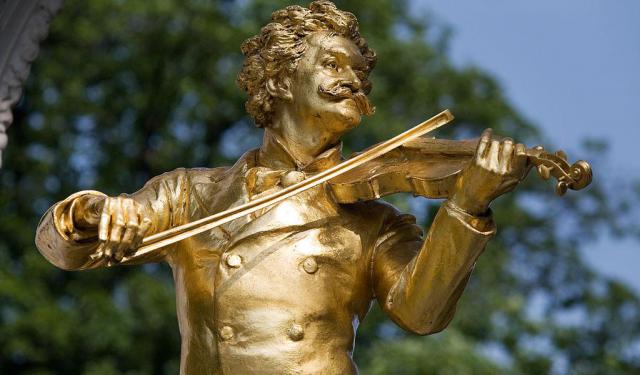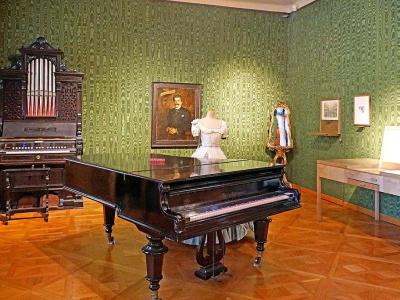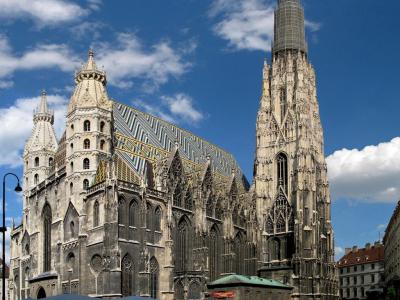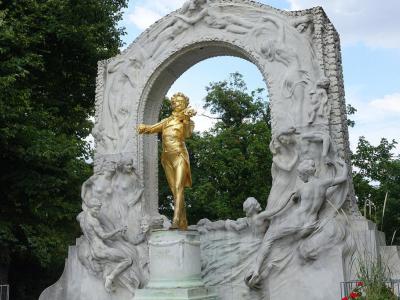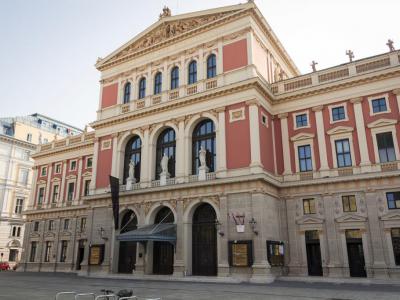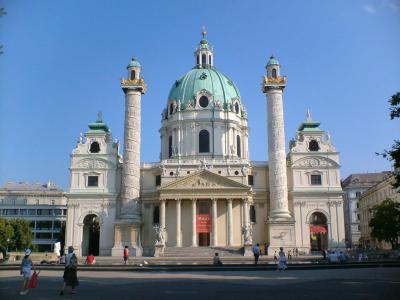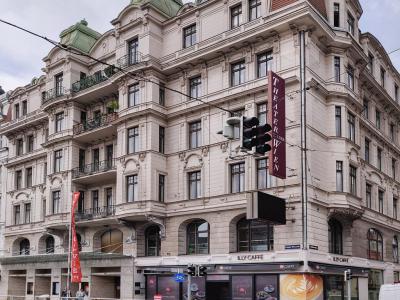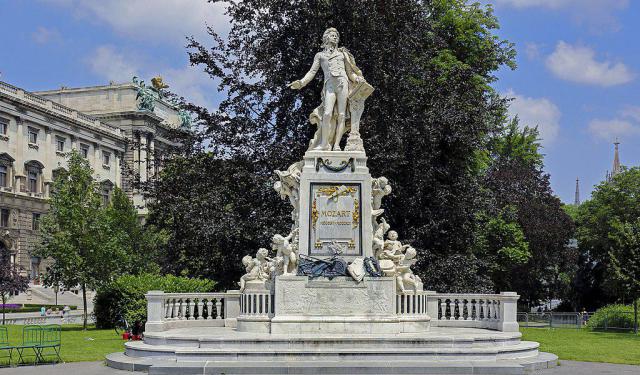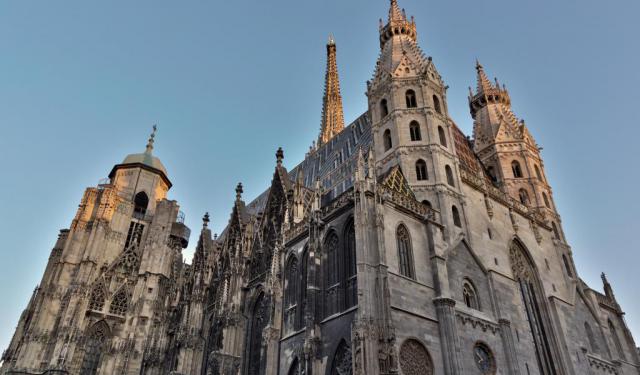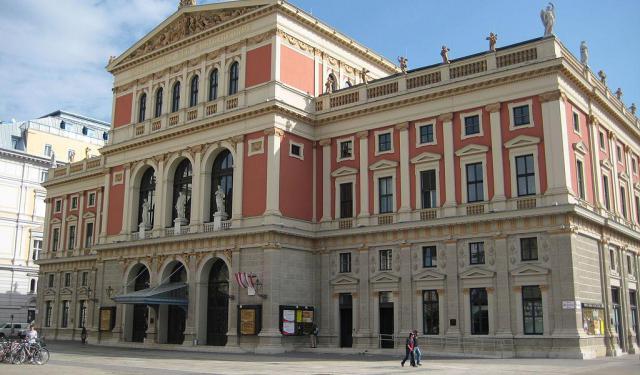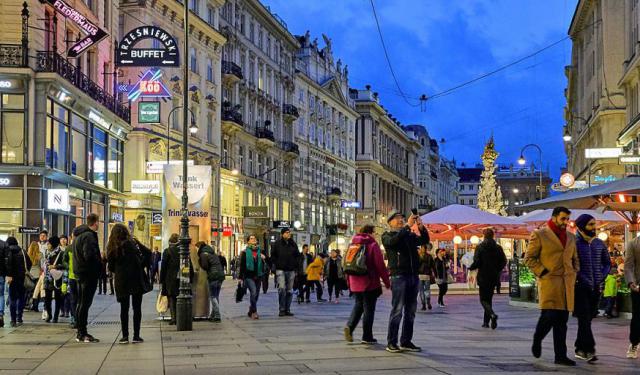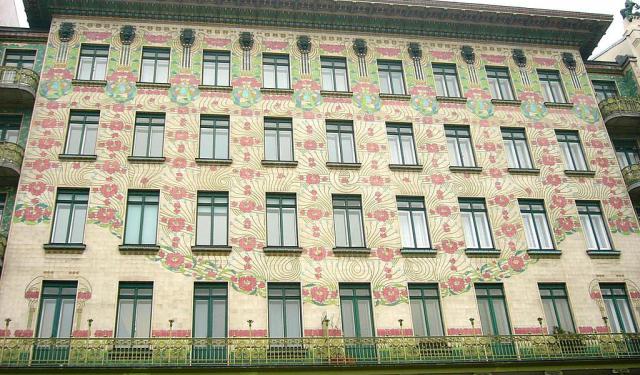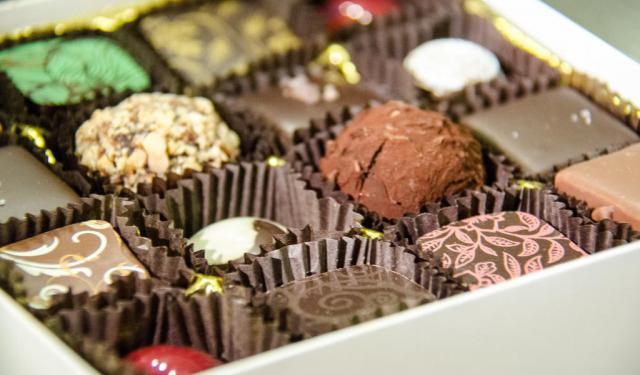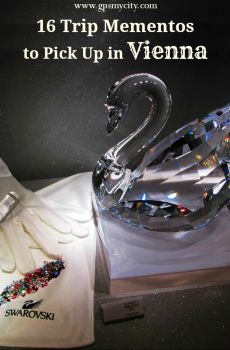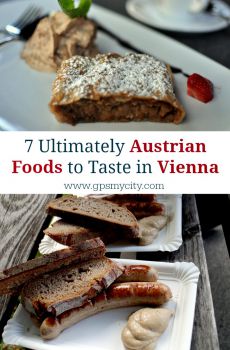Johann Strauss Walking Tour (Self Guided), Vienna
Throughout the entire 19th century, Vienna was a hub of cultural and musical activity, particularly in the realm of classical music, to which Johann Strauss and his father, Johann Strauss Sr., contributed greatly.
Strauss, the son had a personal connection with Vienna deeply rooted in its cultural fabric. Not only was he born here and spent most of his life, but also he achieved tremendous success in this city. Often referred to as the "Waltz King," Strauss Jr. succeeded his father in this capacity and even surpassed him.
Vienna's vibrant social scene and extravagant balls provided a perfect backdrop for Strauss's music – his waltzes marvelously captured the essence of Viennese charm and elegance. Indeed, Strauss's compositions became synonymous with Vienna – the local elite and general public equally eagerly danced to and reveled in these joyful melodies.
There are several notable places in Vienna associated with Johann Strauss. One such is his apartment, at Praterstrasse 54, in which the composer lived from 1863 to 1878. It is now a museum.
Another significant landmark is the iconic Stephansdom or St Stephen's Cathedral. Here, the composer got married – twice!
Stadtpark (City Park) is home to the Johann Strauss Monument, a golden statue with a violin, capturing his charismatic presence. The prestigious Musikverein is where the Vienna Philharmonic Orchestra regularly performs the enchanting compositions of Strauss during the renowned New Year's Concert held in the Golden Hall.
Today, Strauss's legacy continues to thrive. His music – the embodiment of the spirit of Vienna – remains an enduring symbol of the Viennese tradition, earning Johann Strauss a place in the hearts of local citizens and music enthusiasts worldwide. If you wish to trace the footsteps of Strauss Jr. in the Austrian capital, follow this self-guided tour de force!
Strauss, the son had a personal connection with Vienna deeply rooted in its cultural fabric. Not only was he born here and spent most of his life, but also he achieved tremendous success in this city. Often referred to as the "Waltz King," Strauss Jr. succeeded his father in this capacity and even surpassed him.
Vienna's vibrant social scene and extravagant balls provided a perfect backdrop for Strauss's music – his waltzes marvelously captured the essence of Viennese charm and elegance. Indeed, Strauss's compositions became synonymous with Vienna – the local elite and general public equally eagerly danced to and reveled in these joyful melodies.
There are several notable places in Vienna associated with Johann Strauss. One such is his apartment, at Praterstrasse 54, in which the composer lived from 1863 to 1878. It is now a museum.
Another significant landmark is the iconic Stephansdom or St Stephen's Cathedral. Here, the composer got married – twice!
Stadtpark (City Park) is home to the Johann Strauss Monument, a golden statue with a violin, capturing his charismatic presence. The prestigious Musikverein is where the Vienna Philharmonic Orchestra regularly performs the enchanting compositions of Strauss during the renowned New Year's Concert held in the Golden Hall.
Today, Strauss's legacy continues to thrive. His music – the embodiment of the spirit of Vienna – remains an enduring symbol of the Viennese tradition, earning Johann Strauss a place in the hearts of local citizens and music enthusiasts worldwide. If you wish to trace the footsteps of Strauss Jr. in the Austrian capital, follow this self-guided tour de force!
How it works: Download the app "GPSmyCity: Walks in 1K+ Cities" from Apple App Store or Google Play Store to your mobile phone or tablet. The app turns your mobile device into a personal tour guide and its built-in GPS navigation functions guide you from one tour stop to next. The app works offline, so no data plan is needed when traveling abroad.
Johann Strauss Walking Tour Map
Guide Name: Johann Strauss Walking Tour
Guide Location: Austria » Vienna (See other walking tours in Vienna)
Guide Type: Self-guided Walking Tour (Sightseeing)
# of Attractions: 6
Tour Duration: 2 Hour(s)
Travel Distance: 4.1 Km or 2.5 Miles
Author: leticia
Sight(s) Featured in This Guide:
Guide Location: Austria » Vienna (See other walking tours in Vienna)
Guide Type: Self-guided Walking Tour (Sightseeing)
# of Attractions: 6
Tour Duration: 2 Hour(s)
Travel Distance: 4.1 Km or 2.5 Miles
Author: leticia
Sight(s) Featured in This Guide:
- Johann Strauss Apartment
- Stephansdom (St. Stephen's Cathedral)
- Johann Strauss Monument
- Musikverein (Vienna Philharmonic)
- Karlskirche (St. Karl's Church)
- Theater an der Wien (Opera House)
1) Johann Strauss Apartment
Fans of the Waltz King should head for the apartment on the first floor of Praterstraße no. 54 where the composer lived from 1863 until the death of his first wife, the glamorous opera singer Jetty Treffz, in 1878. It was there, under the high ceilings, that he composed "The Blue Danube", Austria's unofficial anthem, despite his father's attempts to drag him out of the music business and to hinder his musical pursuits.
The apartment has (German/English) displays of Strauss' original furnishings and instruments, with visitors able to get glimpses into the man, the composer, the conductor, the caricaturist, and the card player. One room, decorated with ceiling panels of cherubs, contains his grand piano, house organ and standing desk at which he used to compose. There's also a fascinating collection of ballroom memorabilia, including an Amati violin, gimmicky dance cards and quirky ball pendants, kept as mementos of the evening. Oil paintings from Strauss' last apartment, which was destroyed during WWII, are also on site.
Tip:
As you enter the first room, wave at the sensor hidden under the title-page display until "The Blue Danube" starts to play.
The apartment is not to be confused with the Strauss Museum, which instead explicates the entire Strauss musical family.
The apartment has (German/English) displays of Strauss' original furnishings and instruments, with visitors able to get glimpses into the man, the composer, the conductor, the caricaturist, and the card player. One room, decorated with ceiling panels of cherubs, contains his grand piano, house organ and standing desk at which he used to compose. There's also a fascinating collection of ballroom memorabilia, including an Amati violin, gimmicky dance cards and quirky ball pendants, kept as mementos of the evening. Oil paintings from Strauss' last apartment, which was destroyed during WWII, are also on site.
Tip:
As you enter the first room, wave at the sensor hidden under the title-page display until "The Blue Danube" starts to play.
The apartment is not to be confused with the Strauss Museum, which instead explicates the entire Strauss musical family.
2) Stephansdom (St. Stephen's Cathedral) (must see)
In a city where “stunning architecture” is practically the dress code, Saint Stephen’s Cathedral still manages to steal the spotlight-and possibly your neck muscles too, as you crane to admire that towering spire. Known locally as Stephansdom, this Gothic-Romanesque powerhouse has stood at the heart of Vienna’s skyline and soul since 1147, rising on the bones of two earlier churches like the overachiever it is.
In the 14th century, Duke Rudolf IV decided the cathedral needed a serious makeover. The idea worked. As a result, today we have the building stretching 107 meters long, 40 meters wide, and topped by the South Tower-or “Steffl,” if you're on nickname terms-a 136-meter-high feat of medieval determination that took 65 years to complete. It even moonlighted as a lookout post during Vienna’s sieges, complete with a live-in watchman until 1955. One heck of a long shift...
Meanwhile, the North Tower never quite hit its growth spurt. It stalled at 68 meters and got a Renaissance hat in 1578-basically the architectural equivalent of saying “this is fine” and walking away.
But the real showstopper here is the roof. A kaleidoscope of 230,000 glazed tiles arranged into imperial emblems like the double-headed eagle of the Habsburgs and the crests of Vienna and Austria. After being torched in World War II, it was rebuilt with steel instead of wood-600 metric tons of it-making the new roof not just durable, but also self-cleaning. Because even cathedrals love low-maintenance routines...
Inside, things get just as grand. There’s Pummerin, Europe’s second-largest swinging bell, forged from Turkish cannons in 1711 and recast in 1951-because nothing says peace like a bell made from wartime leftovers. Oh, and she lives in the North Tower, ringing out for special moments and daily rituals.
Musical legends haunt these hallowed halls too: Beethoven figured out he was deaf here (tragic), Haydn sang here as a kid (sweet), Strauss got married here-twice (bold), and Mozart? He got married and buried here. Yes, Saint Stephen's is basically the VIP lounge of Viennese music history.
Inside, you’ll find 18 altars, miraculous icons, bone relics-including those of Saint Valentine-and a maze of crypts holding 11,000 souls, including Habsburg royalty.
Tip:
Do a lap around the outside. Gargoyles, engravings, medieval graffiti-you never know what stories the stones will whisper...
In the 14th century, Duke Rudolf IV decided the cathedral needed a serious makeover. The idea worked. As a result, today we have the building stretching 107 meters long, 40 meters wide, and topped by the South Tower-or “Steffl,” if you're on nickname terms-a 136-meter-high feat of medieval determination that took 65 years to complete. It even moonlighted as a lookout post during Vienna’s sieges, complete with a live-in watchman until 1955. One heck of a long shift...
Meanwhile, the North Tower never quite hit its growth spurt. It stalled at 68 meters and got a Renaissance hat in 1578-basically the architectural equivalent of saying “this is fine” and walking away.
But the real showstopper here is the roof. A kaleidoscope of 230,000 glazed tiles arranged into imperial emblems like the double-headed eagle of the Habsburgs and the crests of Vienna and Austria. After being torched in World War II, it was rebuilt with steel instead of wood-600 metric tons of it-making the new roof not just durable, but also self-cleaning. Because even cathedrals love low-maintenance routines...
Inside, things get just as grand. There’s Pummerin, Europe’s second-largest swinging bell, forged from Turkish cannons in 1711 and recast in 1951-because nothing says peace like a bell made from wartime leftovers. Oh, and she lives in the North Tower, ringing out for special moments and daily rituals.
Musical legends haunt these hallowed halls too: Beethoven figured out he was deaf here (tragic), Haydn sang here as a kid (sweet), Strauss got married here-twice (bold), and Mozart? He got married and buried here. Yes, Saint Stephen's is basically the VIP lounge of Viennese music history.
Inside, you’ll find 18 altars, miraculous icons, bone relics-including those of Saint Valentine-and a maze of crypts holding 11,000 souls, including Habsburg royalty.
Tip:
Do a lap around the outside. Gargoyles, engravings, medieval graffiti-you never know what stories the stones will whisper...
3) Johann Strauss Monument
The gilded bronze tribute to the Waltz King is easily one of the most known and most frequently photographed monuments in Vienna – including after dark when beautifully illuminated. Compared to the many traditional 19th-century-style statues at Stadtpark, this certainly is a more playful, elegant and interesting composition to view. Framed by a marble relief made by founding member of the Vienna Secession, Edmund Hellmer, it was unveiled to the public on 26 June 1921.
The statue is located right behind the opulent Kursalon concert hall where Strauss Jr. gave his first concert on 15 October 1868, turning it into a popular place for concerts and for dancing ever since. After undergoing some renovation, the Kursalon is still used for balls and waltz concerts where one can hear the composer's music.
Tip:
Scattered throughout the park are other statues of famous Viennese artists, writers, and composers: Hans Canon, E. J. Schindler, Franz Schubert, Anton Bruckner.
The statue is located right behind the opulent Kursalon concert hall where Strauss Jr. gave his first concert on 15 October 1868, turning it into a popular place for concerts and for dancing ever since. After undergoing some renovation, the Kursalon is still used for balls and waltz concerts where one can hear the composer's music.
Tip:
Scattered throughout the park are other statues of famous Viennese artists, writers, and composers: Hans Canon, E. J. Schindler, Franz Schubert, Anton Bruckner.
4) Musikverein (Vienna Philharmonic)
Two concert halls in one building, designed in the 1860s with dazzling gilding inside. The larger of the two, the Grosser Saal ("Great Hall"), has some of the best acoustics in the world – along with Berlin's Konzerthaus, the Concertgebouw in Amsterdam, and Boston's Symphony Hall – and is the unofficial home of the great Vienna Philharmonic Orchestra, which gives regular sell-out performances, while the other hall, the Brahms Saal, is used for smaller-scale chamber concerts.
The Musikverein's most prestigious event is the annual New Year's Day concert, a tradition started under the Nazis in 1939, and one which is now broadcast live around the world to an estimated 50 million viewers from 95 countries. If you are lucky to be in Vienna during the regular season (September-June), go for a real concert instead of a tourist-oriented one. While tickets for "proper" concerts may be sold out months in advance, other times they will be on sale up to the start of the performance. In any case, use the official box office on the left side of the building or the official website, as agencies are known to take a hefty commission.
The concert hall itself also has a rich musical history, as the place where Johann Strauss Jr. personally conducted the waltz "Freut Euch des Lebens" (Life Let Us Cherish – composed for the opening ball), and where Arnold Schönberg unleashed atonal music – or as Schönberg preferred to call it, "the emancipation of dissonance" – on an unsuspecting and unready Viennese public.
Why You Should Visit:
The building is intricately beautiful and the guided tour, fascinating.
The area itself is very happening so you should be checking it out.
Tip:
One must enter a computer lottery to win the chance to buy tickets for events, but it is well worth the effort.
One could also get a (cheaper) last-minute standing room ticket if one tries.
The Musikverein's most prestigious event is the annual New Year's Day concert, a tradition started under the Nazis in 1939, and one which is now broadcast live around the world to an estimated 50 million viewers from 95 countries. If you are lucky to be in Vienna during the regular season (September-June), go for a real concert instead of a tourist-oriented one. While tickets for "proper" concerts may be sold out months in advance, other times they will be on sale up to the start of the performance. In any case, use the official box office on the left side of the building or the official website, as agencies are known to take a hefty commission.
The concert hall itself also has a rich musical history, as the place where Johann Strauss Jr. personally conducted the waltz "Freut Euch des Lebens" (Life Let Us Cherish – composed for the opening ball), and where Arnold Schönberg unleashed atonal music – or as Schönberg preferred to call it, "the emancipation of dissonance" – on an unsuspecting and unready Viennese public.
Why You Should Visit:
The building is intricately beautiful and the guided tour, fascinating.
The area itself is very happening so you should be checking it out.
Tip:
One must enter a computer lottery to win the chance to buy tickets for events, but it is well worth the effort.
One could also get a (cheaper) last-minute standing room ticket if one tries.
5) Karlskirche (St. Karl's Church)
Vienna’s unapologetic showpiece of Baroque drama perched on the southern edge of Karl's Square, the dazzling Saint Karl’s Church is like a powdered wig on a powdered face. Commissioned in 1713 by Emperor Karl VI as a divine “thank you” for surviving the plague, this architectural stunner is dedicated to Karl Borromeo, a 16th-century saint famous for fighting epidemics and spiritual malaise in equal measure.
Now, if you’re sensing a bit of a style mash-up, you’re absolutely right. Completed in 1737, the church is part Roman temple, part imperial flex. It flaunts a lofty elongated dome, flanked by twin columns that look like they’ve time-traveled straight from ancient Rome-specifically modeled after Trajan’s Column, but with a Baroque Viennese twist. The columns aren’t just decorative-they’re a not-so-subtle nod to the Habsburgs’ self-image: as mighty as the mythological Pillars of Hercules.
Step inside, and you're wrapped in marble, gold, and the kind of symbolic artistry that screams “imperial ambition meets holy devotion.” Look up, and you’ll see a dramatic fresco of Saint Karl interceding on behalf of humanity-because why keep your miracles subtle? The pulpit, carved from rich walnut, is a storytelling masterpiece of its own, fully restored in the early 2000s to show off every curve and flourish in glorious detail.
Still, Saint Karl’s isn’t just about stone and symbolism-it’s got star power, too. Composer Antonio Vivaldi, who died nearby in 1741, is honored here with regular concerts that make the walls practically hum with violins. In 1878, Johann Strauss said “I do” to his second wife at this very altar… although she didn’t care much for his music, which probably explains why she said “I don’t” four years later. Oh, and Hollywood legend Hedy Lamarr got hitched here in 1933-just in case you needed one more reason to stare at the pews.
So, regardless of whether you're here for the saints, the stucco, or the scandals, Saint Karl’s Church delivers Baroque brilliance with a Viennese wink all the same...
Tip:
Yes, there’s an entry fee, but it's absolutely worth it (students, rejoice-discounts apply).
A nifty elevator takes you right up to the dome, where you can admire the ceiling frescoes face-to-face. And don’t forget to sneak a peek out the dome window-the view of Vienna alone is worth the ride...
Now, if you’re sensing a bit of a style mash-up, you’re absolutely right. Completed in 1737, the church is part Roman temple, part imperial flex. It flaunts a lofty elongated dome, flanked by twin columns that look like they’ve time-traveled straight from ancient Rome-specifically modeled after Trajan’s Column, but with a Baroque Viennese twist. The columns aren’t just decorative-they’re a not-so-subtle nod to the Habsburgs’ self-image: as mighty as the mythological Pillars of Hercules.
Step inside, and you're wrapped in marble, gold, and the kind of symbolic artistry that screams “imperial ambition meets holy devotion.” Look up, and you’ll see a dramatic fresco of Saint Karl interceding on behalf of humanity-because why keep your miracles subtle? The pulpit, carved from rich walnut, is a storytelling masterpiece of its own, fully restored in the early 2000s to show off every curve and flourish in glorious detail.
Still, Saint Karl’s isn’t just about stone and symbolism-it’s got star power, too. Composer Antonio Vivaldi, who died nearby in 1741, is honored here with regular concerts that make the walls practically hum with violins. In 1878, Johann Strauss said “I do” to his second wife at this very altar… although she didn’t care much for his music, which probably explains why she said “I don’t” four years later. Oh, and Hollywood legend Hedy Lamarr got hitched here in 1933-just in case you needed one more reason to stare at the pews.
So, regardless of whether you're here for the saints, the stucco, or the scandals, Saint Karl’s Church delivers Baroque brilliance with a Viennese wink all the same...
Tip:
Yes, there’s an entry fee, but it's absolutely worth it (students, rejoice-discounts apply).
A nifty elevator takes you right up to the dome, where you can admire the ceiling frescoes face-to-face. And don’t forget to sneak a peek out the dome window-the view of Vienna alone is worth the ride...
6) Theater an der Wien (Opera House)
Splendid architecturally, well organized, and with a program of shows that hosts the most important artists in Europe year-round, Vinenna's oldest standing theater is a pleasure for tourists. You can read interviews with singers who say that they love it, too, because of its intimacy and the way its acoustics show off the voice.
Theater an der Wien was opened in 1801; a statue above the original Millöckergasse entrance (around the corner from the present main entrance) shows its founder, Emanuel Schikaneder, playing Papageno in Mozart's "The Magic Flute". The building is also closely linked to Beethoven, who lived here while working on "Fidelio" (his only opera, celebrating the triumph of marital love and female heroism over the cruelty of official tyranny), but also to Johann Strauss Jr, whose operetta "Die Fledermaus" was premiered on 5 April 1874 and has been part of the regular repertoire ever since.
The spirit of musical history probably adds to one's enjoyment, but the performances one sees here – including daring performances of 20th- and 21st-century works – are wonderful in themselves: imaginative and effective staging, fine orchestras and choruses, and exceptional singers. Tours of the foyer, auditorium, and stages (with a sneak peek into the cloakrooms and mask collection) sold at the box office cost €7 per person and are a wonderful way to get the entire history and see backstage areas.
Theater an der Wien was opened in 1801; a statue above the original Millöckergasse entrance (around the corner from the present main entrance) shows its founder, Emanuel Schikaneder, playing Papageno in Mozart's "The Magic Flute". The building is also closely linked to Beethoven, who lived here while working on "Fidelio" (his only opera, celebrating the triumph of marital love and female heroism over the cruelty of official tyranny), but also to Johann Strauss Jr, whose operetta "Die Fledermaus" was premiered on 5 April 1874 and has been part of the regular repertoire ever since.
The spirit of musical history probably adds to one's enjoyment, but the performances one sees here – including daring performances of 20th- and 21st-century works – are wonderful in themselves: imaginative and effective staging, fine orchestras and choruses, and exceptional singers. Tours of the foyer, auditorium, and stages (with a sneak peek into the cloakrooms and mask collection) sold at the box office cost €7 per person and are a wonderful way to get the entire history and see backstage areas.
Walking Tours in Vienna, Austria
Create Your Own Walk in Vienna
Creating your own self-guided walk in Vienna is easy and fun. Choose the city attractions that you want to see and a walk route map will be created just for you. You can even set your hotel as the start point of the walk.
Mozart Walking Tour
Wolfgang Amadeus Mozart spent a significant portion of his life in Vienna. Here, he achieved recognition, and the city holds enormous historical and cultural significance for his legacy. Mozart first visited Vienna as a child prodigy in 1762, and in 1781 came here to stay.
The city met the composer with a vibrant and cosmopolitan atmosphere brought about by some of the top musicians and artists... view more
Tour Duration: 1 Hour(s)
Travel Distance: 2.0 Km or 1.2 Miles
The city met the composer with a vibrant and cosmopolitan atmosphere brought about by some of the top musicians and artists... view more
Tour Duration: 1 Hour(s)
Travel Distance: 2.0 Km or 1.2 Miles
Old Town Churches Walking Tour
"Vienna is the city of miracles and music" – Whoever said that must have emphasized Vienna's close association with the Christian faith. The intertwining of Christian heritage and artistry in the Austrian capital finds expression primarily in its magnificent churches.
Sitting at "the crossroads of Christian traditions", Vienna is home to various Christian... view more
Tour Duration: 2 Hour(s)
Travel Distance: 3.9 Km or 2.4 Miles
Sitting at "the crossroads of Christian traditions", Vienna is home to various Christian... view more
Tour Duration: 2 Hour(s)
Travel Distance: 3.9 Km or 2.4 Miles
Vienna's Historical Music Venues
Austria is synonymous with classical music almost to the point of obsession, and to call Vienna the "Musical Capital of the World" would be hardly an exaggeration. Indeed, over the past centuries, the city served as the home and workplace for many great musicians like Wolfgang Amadeus Mozart, Ludwig van Beethoven, Johann Strauss, Joseph Haydn, Franz Schubert, and others.
Among the... view more
Tour Duration: 2 Hour(s)
Travel Distance: 3.0 Km or 1.9 Miles
Among the... view more
Tour Duration: 2 Hour(s)
Travel Distance: 3.0 Km or 1.9 Miles
Vienna Introduction Walking Tour
A city of green parks, opulent architecture, elegant shopping, crowded theaters, and boulevards for leisurely sauntering - Vienna, the capital of Austria, embodies a blend of regal tradition and contemporary vibrancy. The origin of the city's name is rooted in Roman times, stemming from the Celtic word Vedunia, meaning “forest stream”, which later evolved into Vindobona, a Roman... view more
Tour Duration: 3 Hour(s)
Travel Distance: 4.6 Km or 2.9 Miles
Tour Duration: 3 Hour(s)
Travel Distance: 4.6 Km or 2.9 Miles
Vienna's Art Nouveau Architecture Tour II
If there are cities that flirt, Vienna is definitely the one. Here, even the buildings know how to do it.
Around the turn of the 20th century, the Austrian capital caught the Art Nouveau fever and decided that straight lines, drab walls, and historical imitation simply wouldn’t do anymore. Instead, it took to ornamental swirls, flowing curves, floral flourishes, and enough decorative detail... view more
Tour Duration: 1 Hour(s)
Travel Distance: 2.0 Km or 1.2 Miles
Around the turn of the 20th century, the Austrian capital caught the Art Nouveau fever and decided that straight lines, drab walls, and historical imitation simply wouldn’t do anymore. Instead, it took to ornamental swirls, flowing curves, floral flourishes, and enough decorative detail... view more
Tour Duration: 1 Hour(s)
Travel Distance: 2.0 Km or 1.2 Miles
Old Town Chocolate Stores
Vienna is famous for its love for sweet indulgence. And when it comes to chocolate, it stands tall among other locally-made mouth-watering confections.
Vienna's chocolate scene is deeply rooted in a rich culinary tradition. It has been sustained by several historic chocolate houses, located in the Old Town, that have been serving decadent treats for generations.
Landmark... view more
Tour Duration: 1 Hour(s)
Travel Distance: 1.2 Km or 0.7 Miles
Vienna's chocolate scene is deeply rooted in a rich culinary tradition. It has been sustained by several historic chocolate houses, located in the Old Town, that have been serving decadent treats for generations.
Landmark... view more
Tour Duration: 1 Hour(s)
Travel Distance: 1.2 Km or 0.7 Miles
Useful Travel Guides for Planning Your Trip
Top 15 Austrian Things to Buy in Vienna
Vienna stool, Viennese schnitzel, Viennese waltz, Vienna sausage, Viennese apple strudel... There's so much Vienna to it, that you might think you've heard it all. Luckily, chances are that you haven't and there's much more in store left to be discovered about this fascinating...
7 Ultimately Austrian Foods to Taste in Vienna
Once the center of the vast Hapsburg Empire, stretched from France in the West to Russia in the East, Austria has embraced many ethnic influences in its cuisine over the course of centuries. Many of the country's distinctive dishes reflect its multinational heritage. Coffee culture, for...
The Most Popular Cities
/ view all
